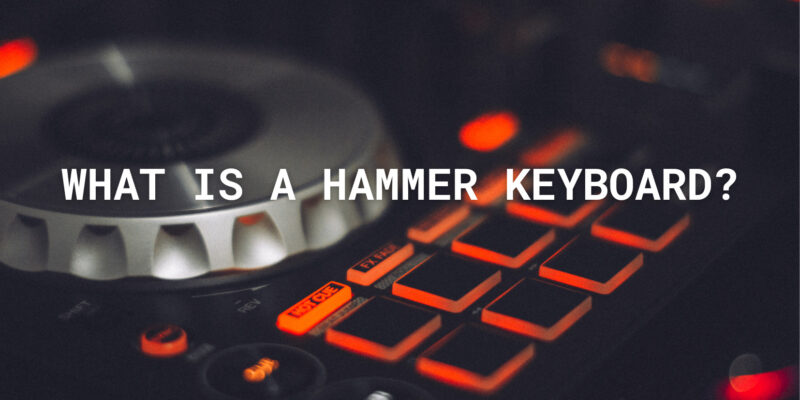In the realm of digital pianos, the term “hammer keyboard” is frequently mentioned, often as a hallmark of quality and realism in these instruments. But what exactly is a hammer keyboard, and why is it highly regarded among pianists and musicians? In this article, we will explore the concept of a hammer keyboard, its construction, and the benefits it offers to pianists seeking an authentic playing experience.
The Anatomy of a Hammer Keyboard
A hammer keyboard, also known as a weighted or hammer-action keyboard, is a specialized keyboard design that closely emulates the feel and touch of an acoustic piano. This emulation is achieved through a combination of mechanical and engineering components:
- Keys with Weighted Action:
The keys on a hammer keyboard are designed to replicate the weight and responsiveness of the keys on an acoustic piano. They feature a weighted action mechanism that adds resistance to the keys, mimicking the sensation of pressing down on the keys of a traditional piano.
- Hammer Mechanism:
The most distinctive feature of a hammer keyboard is its hammer mechanism. This mechanism consists of small hammers located beneath each key. When a key is pressed, the corresponding hammer moves upwards, creating resistance that simulates the feel of pressing down on the piano’s hammers and strings.
- Escapement and Let-off:
High-quality hammer keyboards also incorporate features like escapement and let-off. Escapement recreates the sensation of the key being released just before the hammer strikes the string, a characteristic of grand pianos. Let-off is a subtle release of pressure on the key as the hammer falls back, further enhancing the realism of the keyboard action.
Benefits of a Hammer Keyboard
- Realistic Piano Feel:
The primary advantage of a hammer keyboard is that it provides a remarkably realistic piano-playing experience. Pianists can feel the weight and resistance of the keys, allowing for nuanced and expressive playing.
- Technique Development:
For pianists, practicing on a hammer keyboard is conducive to developing proper piano technique. The weighted keys encourage finger strength and precision, helping pianists transition seamlessly between digital and acoustic pianos.
- Expressive Playing:
Hammer keyboards enable musicians to convey their emotions and musical intentions more authentically. The dynamic response of the keys, including the ability to control touch and dynamics, enhances the expressiveness of performances.
- Versatility:
Digital pianos with hammer keyboards offer the best of both worlds. They combine the convenience and versatility of digital instruments with the tactile authenticity of acoustic pianos.
Applications of Hammer Keyboards
Hammer keyboards are not limited to digital pianos alone. They are also featured in other keyboard instruments, such as stage pianos, MIDI controllers, and hybrid pianos, expanding their application to various musical genres and performance settings.
Conclusion
The hammer keyboard is a pivotal innovation in the world of digital pianos, bringing the essence of an acoustic piano’s touch and feel to the digital realm. Its design, which replicates the weighted keys and hammer action of traditional pianos, has elevated the quality and authenticity of digital piano playing. For pianists seeking a genuine and expressive playing experience, a hammer keyboard is often the preferred choice, bridging the gap between the digital and acoustic piano worlds.


